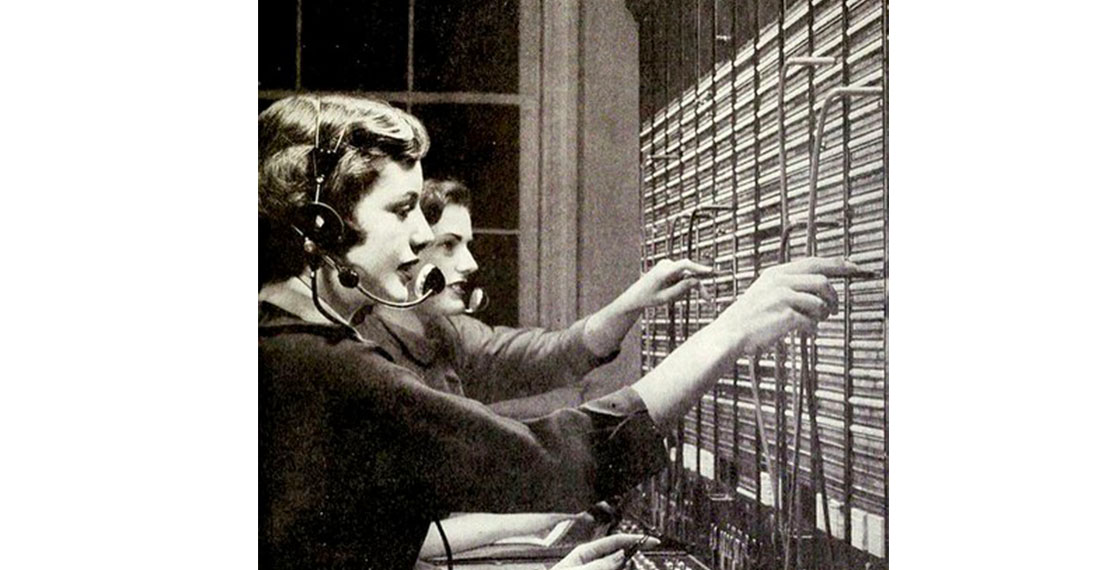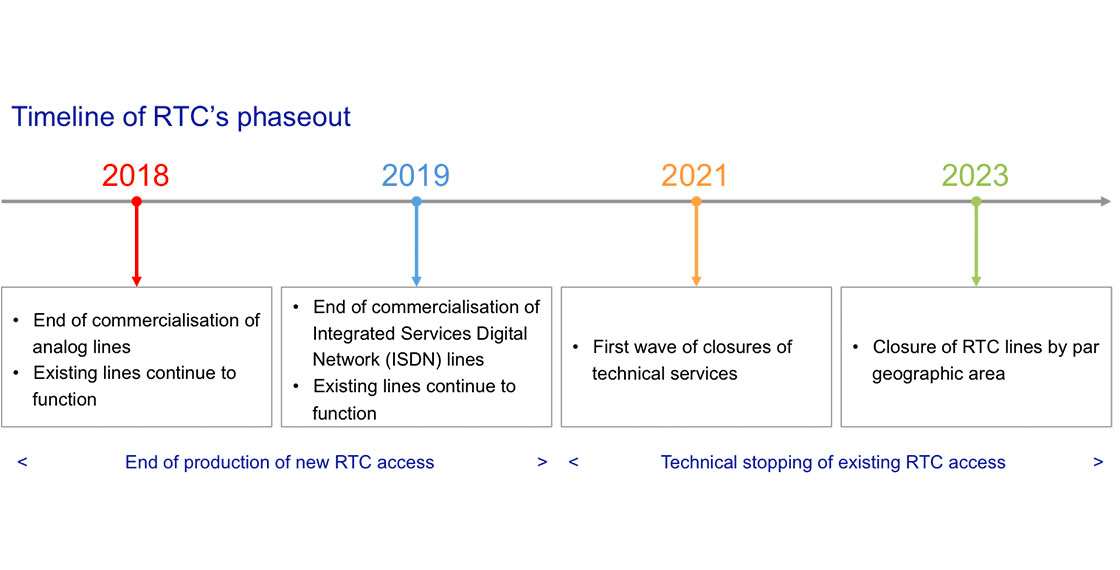After more than a century of service, ARCEP (Regulatory Authority for Electronic Communications and Posts) has just announced the gradual elimination of analog telephony (RTC). We’ll unveil here the reasons and implications behind this decision.
WHAT IS RTC?
The switched telephone network (or RTC) is the historic network for landlines. Invented at the end of the 19th century by Alexander Graham Bell, the principle of RTC consists of connecting a subscriber’s post to a telephone switch on the public network. In France, this connection is historically made via the famous T-plug.

At first, communications were established by operators thanks to a system of flexible cords equipped with cards and tables showing the arrival and departure of subscribers. These devices were then replaced by automatic switching systems, which have undergone continuous improvement: first electromechanical, then electronic, they are now digital and completely computer-controlled.Today, RTC use is quite varied: for phones and fax (including traditional phone system connections, PABX), payment terminals, elevators, alarm systems and video surveillance.
THE END OF RTC ANNOUNCED
However, despite these various developments, ARCEP has announced the end of RTC. In effect, this is based on technology and equipment deployed in the 70s and 80s by the incumbent, France Telecom. The telephone switches that support these services are reaching the end of their lifespans and becoming impossible to maintain over time, given the obsolescence of this technology.This end, having been announced since 2016, has begun to take effect progressively. While the year 2018 will see the end of the commercialisation of analog lines, the existing lines will continue to function. The definitive closure of existing RTC lines is planned starting in 2021. However, the end of RTC does not mean the end of landline service. This will still be provided through new generation networks (voice over IP), copper or fibre.

THE ADVENT OF IP TELECOM
The migration of telecom as we know it to a new generation technology using IP (Internet Protocol) offers real opportunities for individuals and companies alike. In effect, IP telecom can evolve and is more flexible than its analog predecessor. It’s compatible with all SIP terminals (IP phones, smartphones, tablets). It offers the advantages of collaboration and mobility and guarantees limited costs, making use mostly of Internet access from work or home. A few exceptions remain nonetheless: credit card payment terminals, fax machines, alarm systems, video surveillance, emergency and elevator support lines do not fully support IP or GSM and require other alternatives, which are a current object of deliberation. With the subjects of infrastructure settled and telecom no longer limited to RTC technology in switching to all-IP, a new path to services for businesses and individuals opens up, as do the choices for cloud solutions that are more flexible and more responsive to these needs.
Published on July 20, 2017.

